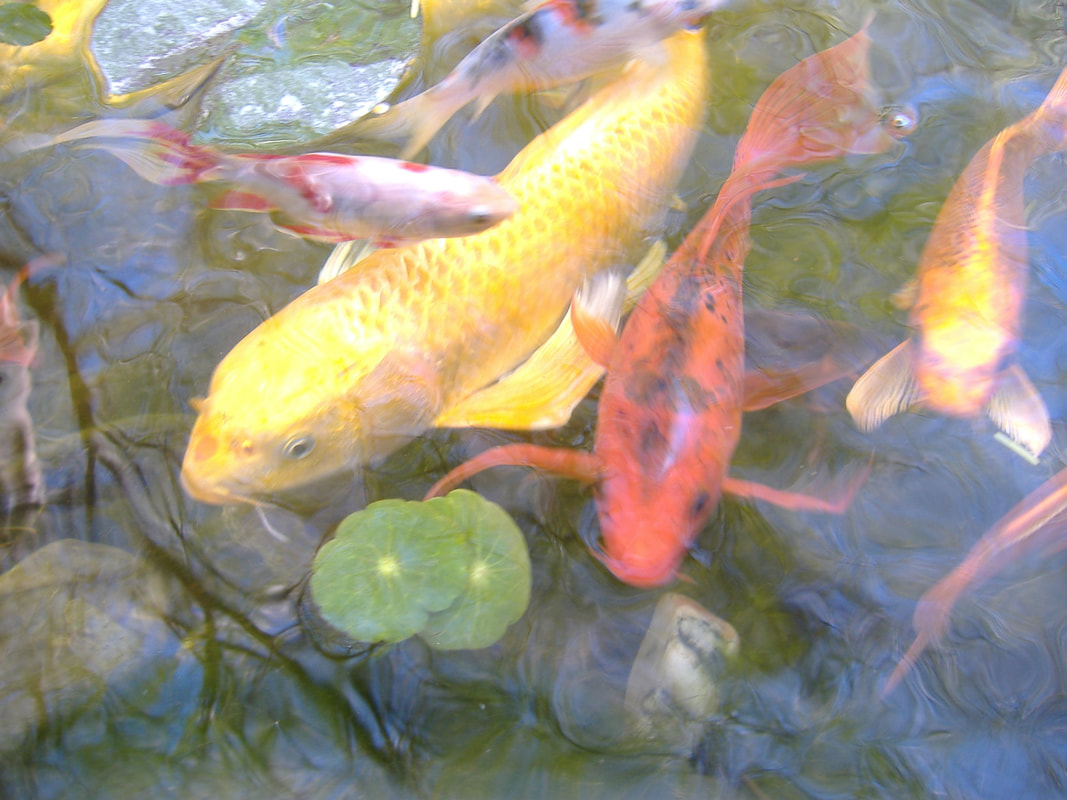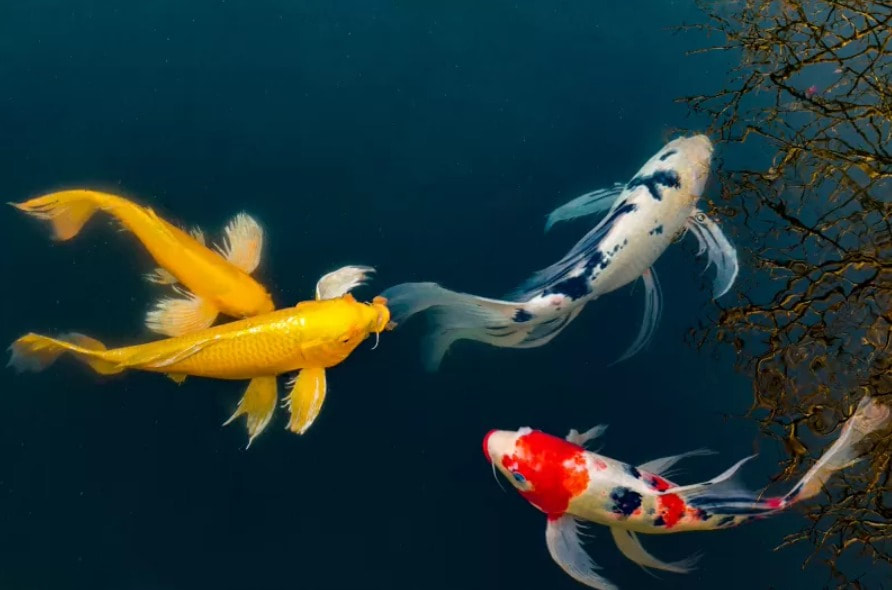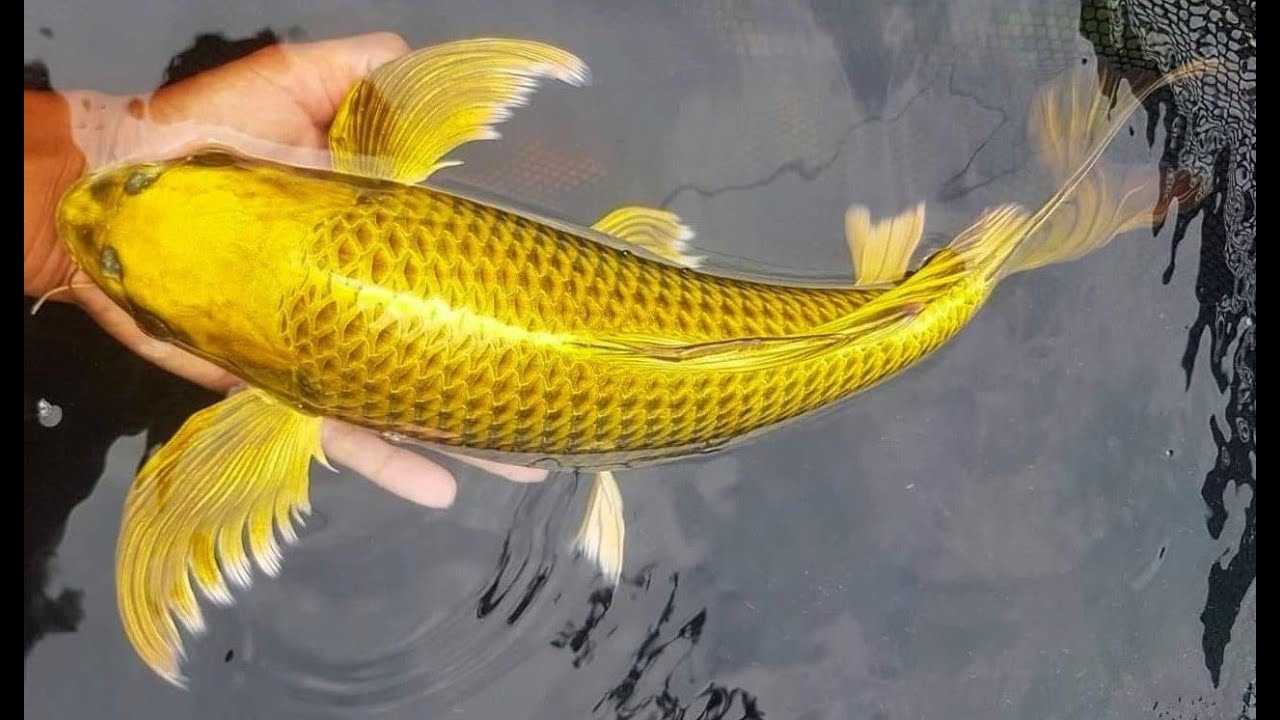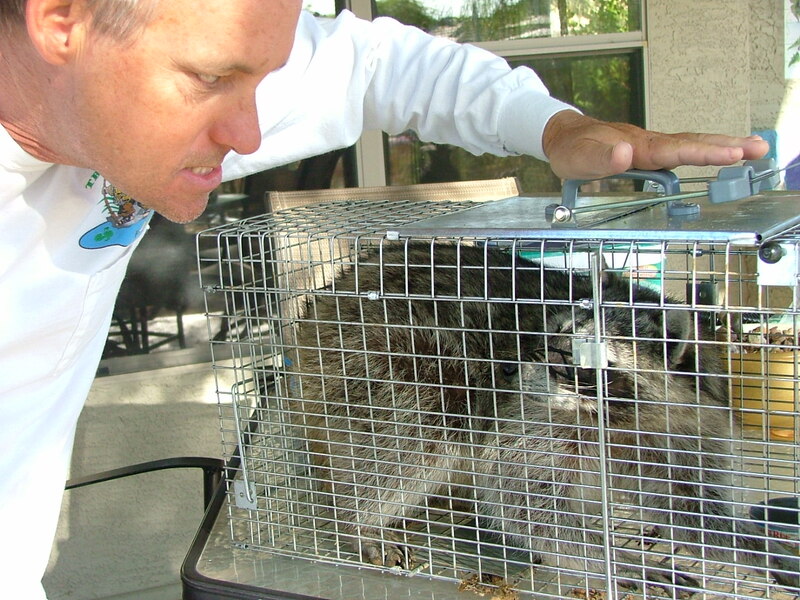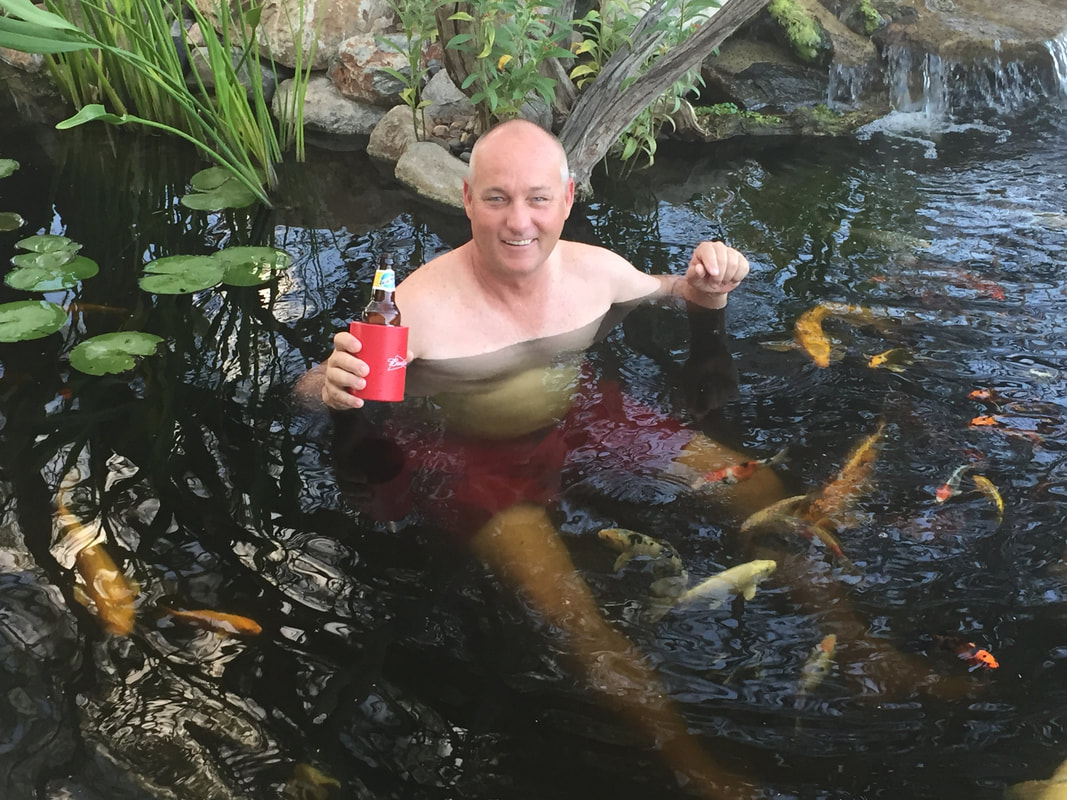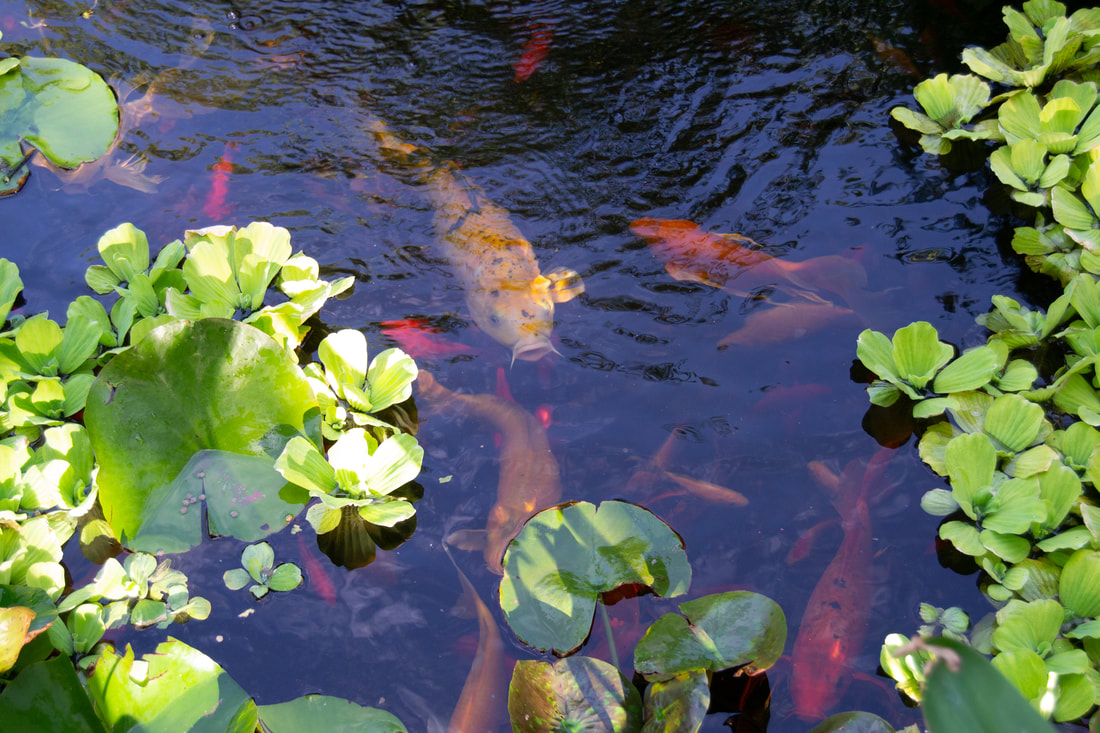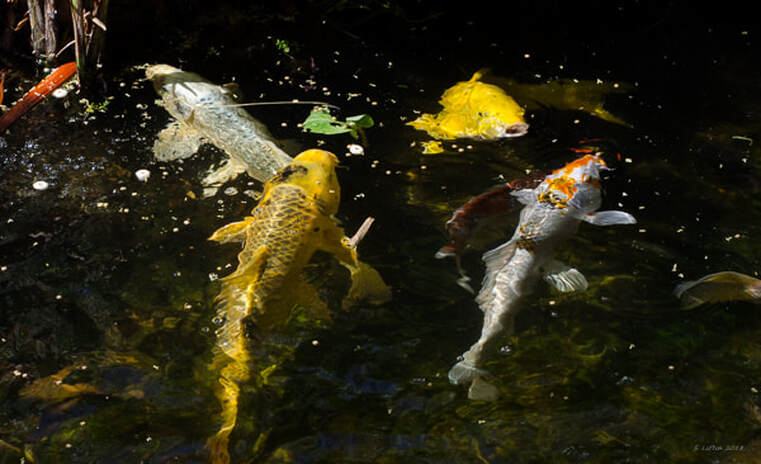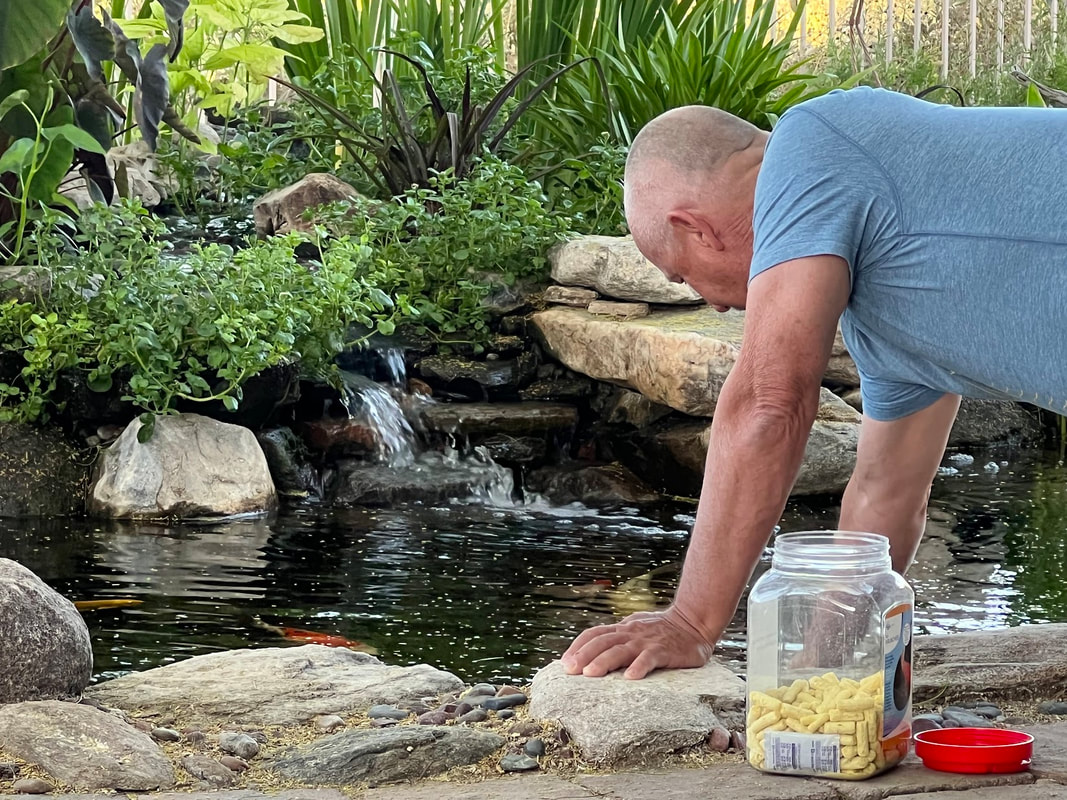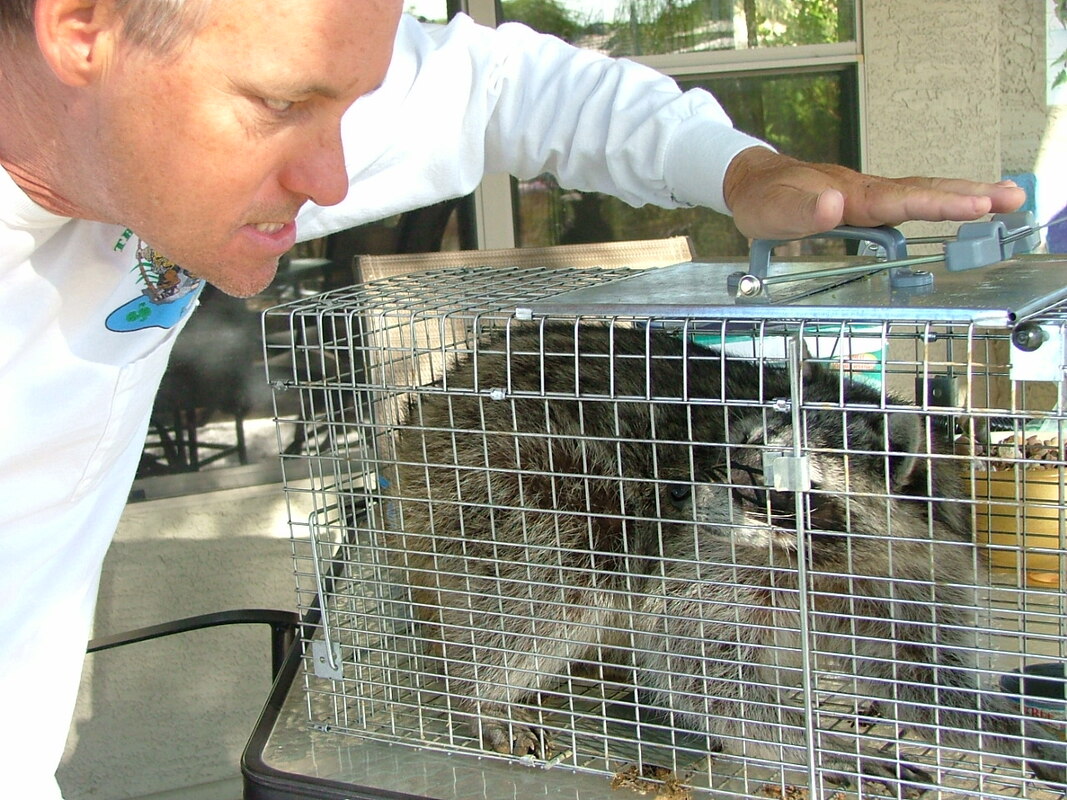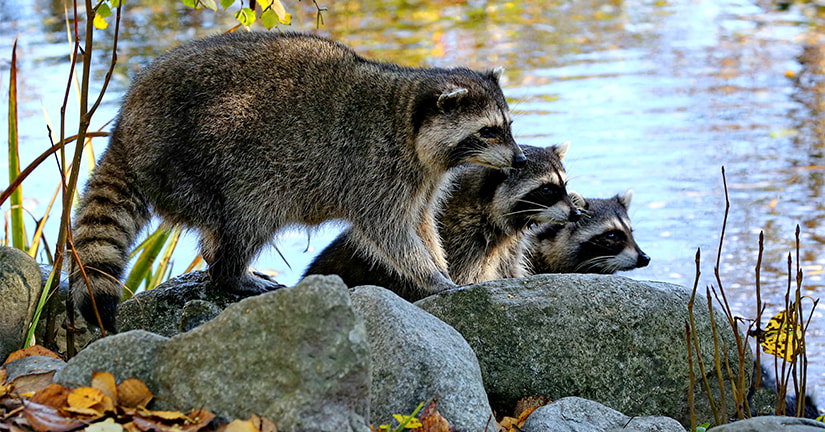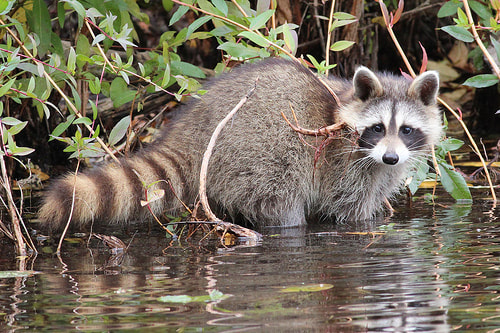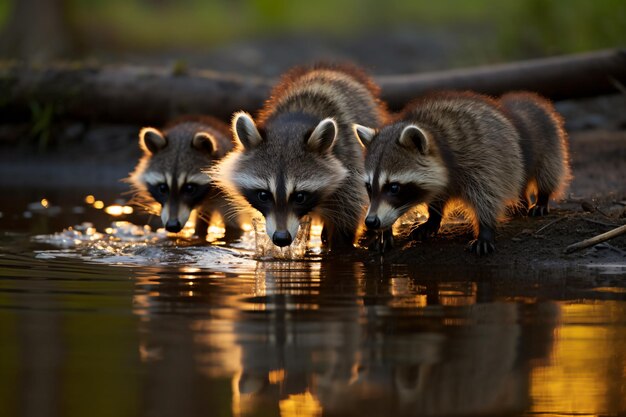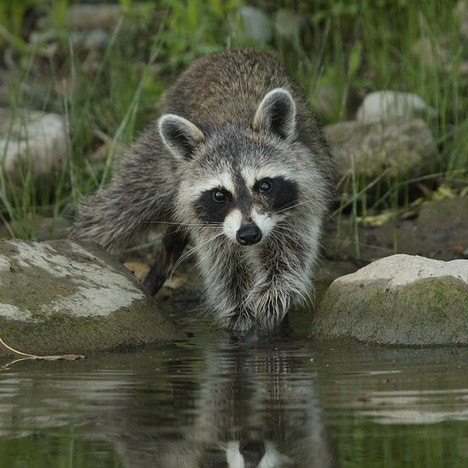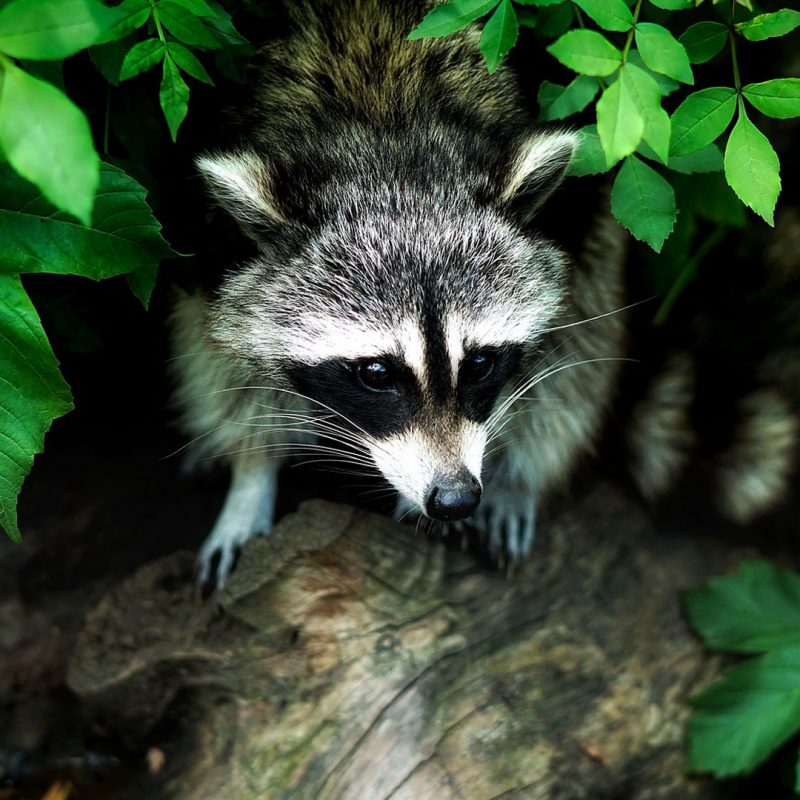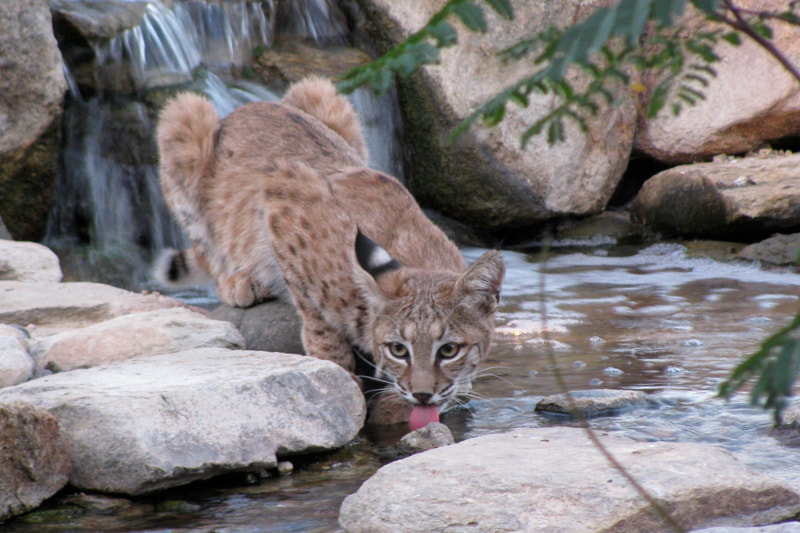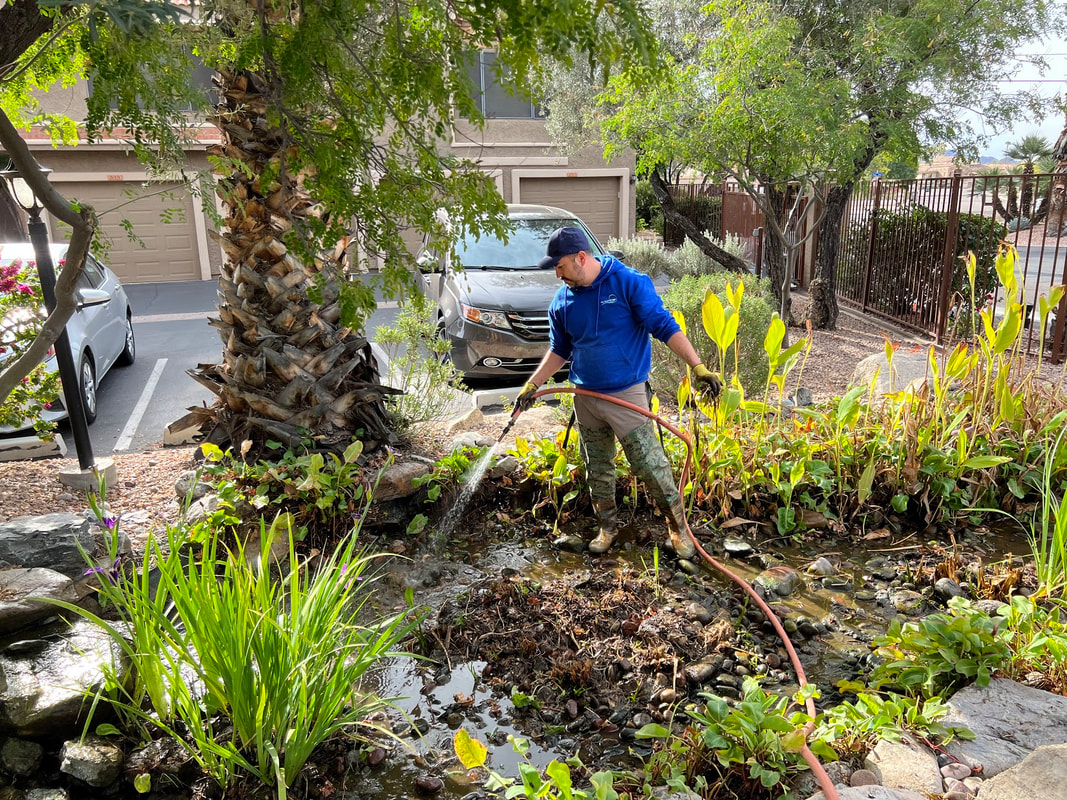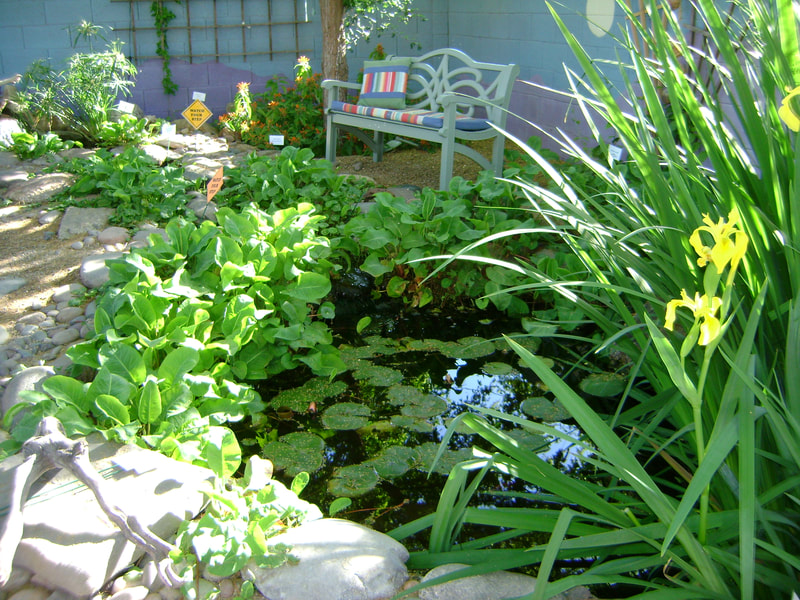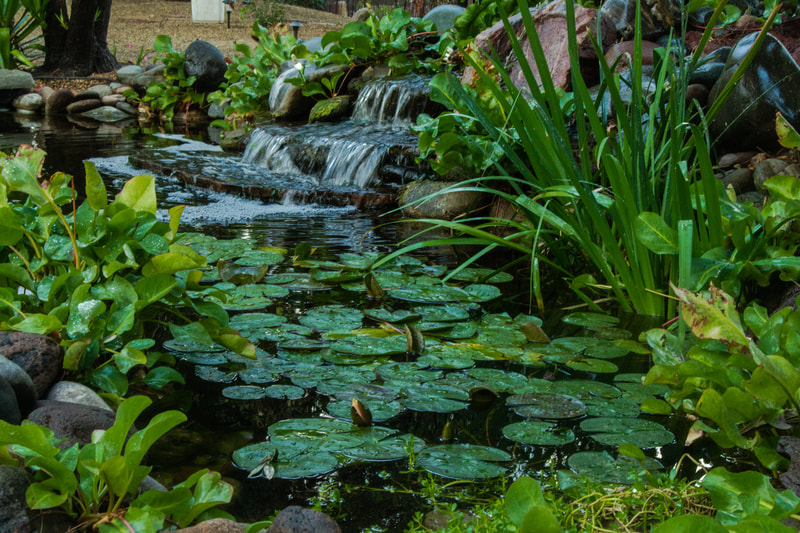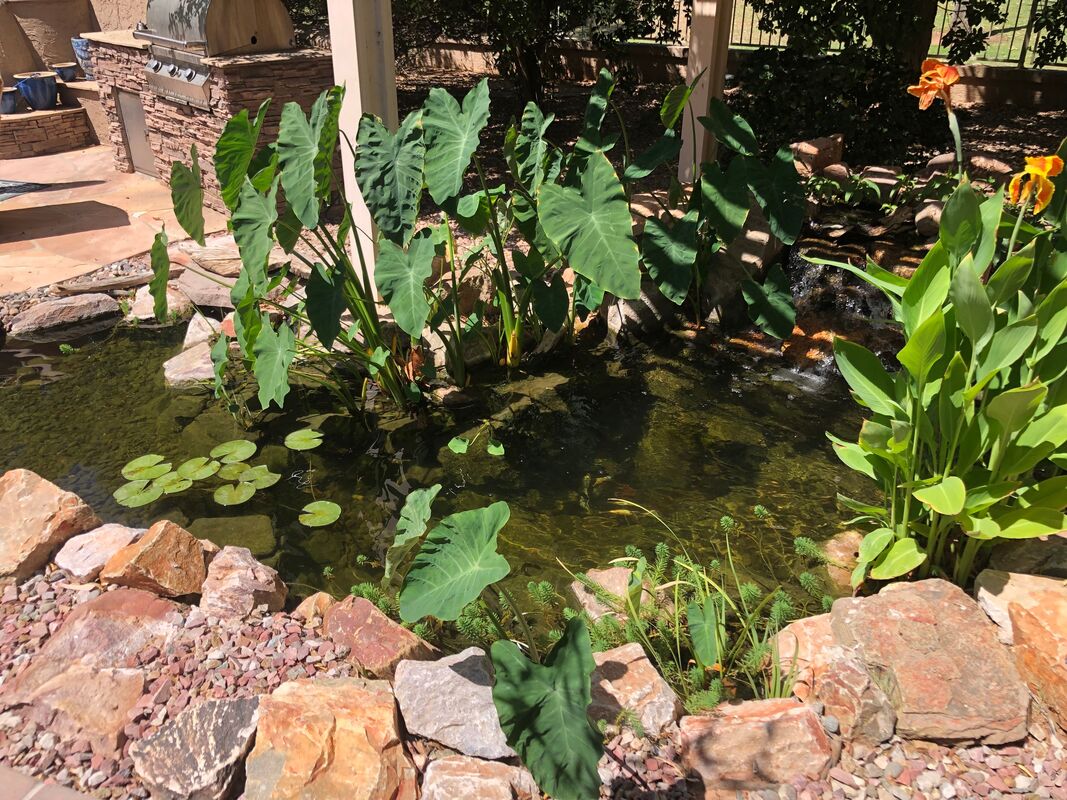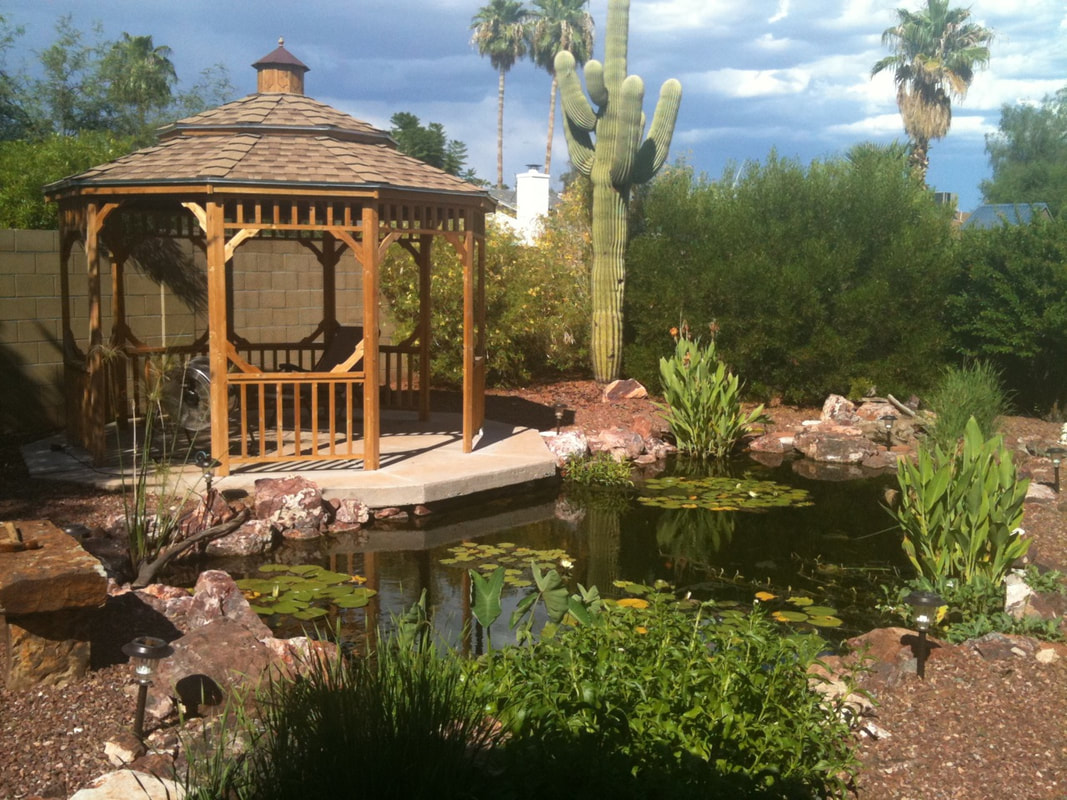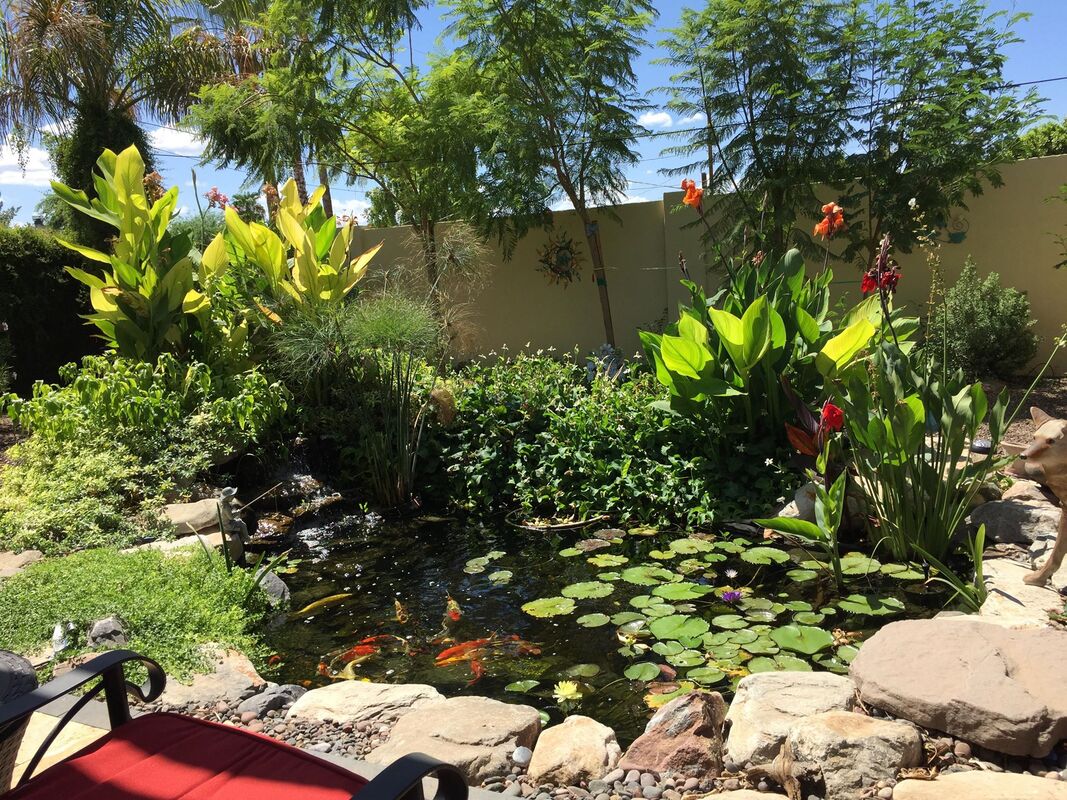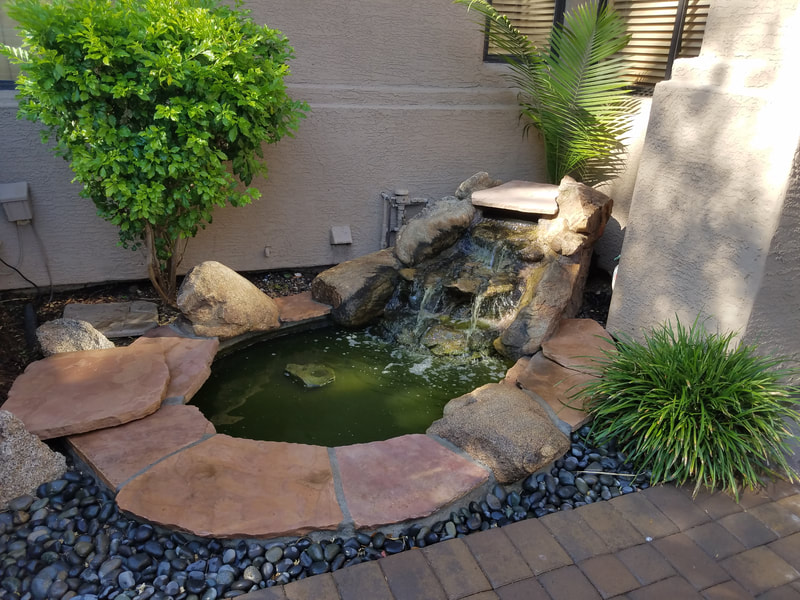A STRANGE FOAM IN THE PONDAn elderly client called one day concerned that there was a bunch of foam in her pond that wasn't there the day before. She described it, and is asked if it smells a bit like the ocean. She takes a big whiff and says that it does indeed! Trying to be delicate, in consideration of her age and sensibilities, it's explained to her that it's simply excess proteins in the water and told that it will dissipate in a day or two. She questions the assessment and doesn't understand what that means. So, she's told point blank that it's sperm. She gasps and, after a moment of complete silence, declares: "What kind of sick SOB would climb into my backyard and do that in my pond?!?!" After it was explained that it was merely fish sperm from spawning activities, she was relieved and felt much better. Everyone had a good laugh. So, if you notice an odd foaming in your pond, and it has a funny ocean-like smell, that means your fish are happy and gettin' busy. WHY ARE MY FISH FIGHTING?Along with the foam, you might also notice that your Koi are traveling around in a pack, and maybe it even looks like they're picking on one particular fish. Fish spawning is a rough activity. The boys must beat the eggs out of the female in order to fertilize them. If this doesn't happen, the female could have health issues resulting from not being able to release the roe. In rare occurrences, if you have too many male fish and not enough female fish, the males could damage or even kill the female during this activity. OTHER POSTS THAT MIGHT INTEREST YOU: Whether you’re new to koi ponds, or have enjoyed a pond for several years, you’ll want to know about three basic rules that will help you create and maintain a healthy habitat for your finned friends. We want fish to be happy and your water gardening experience to be as enjoyable as possible. Once you become familiar with your fish and their basic needs, you’ll be well on your way to enjoying the full benefits of living with a pond. 1. Fish Need Clean WaterYour pond water should always be clean-smelling and have good clarity. On occasion, the water might be green due to suspended algae, or slightly brown due to tannins. Algae is expected in the spring when the plants haven’t yet reached maturity for the season (the first weed in the garden, so to speak. Once the plants begin their aggressive growth, they consume more nutrients from the water effectively starving out the algae. Ponds in sunny locations experience higher algae growth, but this can be alleviated by shading the pond surface with waterlilies. Keep in mind, algae isn’t necessarily a bad thing. Your pond fish will graze on that algae so it’s good to have a little of the green stuff. It’s actually also part of your water filtration system to keep the water itself gin-clear. Too much algae can become unsightly but can be controlled with various water treatments or by hand-weeding it out. If you’re going to keep fish, it’s imperative that your pond have proper filtration. A mechanical skimmer is your first line of defense for removing unwanted debris such as leaves and twigs from the surface of the water. If left to decay, organic material can cause a host of water quality issues. The skimmer also houses the pump which circulates the water and helps to aerate the pond. A biological filter is positioned opposite the skimmer to create the beginning of a waterfall. This filter uses bacteria to break down pond waste, converting it into less harmful compounds that can act as aquatic plant fertilizers. 2. Maintain a Healthy PopulationOne secret to making sure your pond water remains balanced and healthy, is to control your fish population. Sure, it’s tempting to add lots of colorful koi and pond fish to your water garden, but you want to avoid overcrowding. Too many fish create excess waste in the pond water, which in turn can cause water quality issues. As a general rule of thumb, pond fish need 10 gallons of water for every inch of their length. So a 10-inch long fish needs 100 gallons. If you have five 10-inch-long fish, your water garden should have at least 500 gallons of water. Keep in mind that your fish are going to grow so be sure to understock your pond in the beginning. 3. Feed Your Fish AppropriatelyKoi and other pond fish will feed on natural sources such as algae and wayward insects, but they’ll benefit from a quality fish food. Just like other pet foods, not all fish food is created equal. You want to look for food that contains high-quality protein along with stabilized multivitamins and probiotics. Only feed your fish what they can consume in about three to five minutes. In the summer you can feed them twice per day, but in spring and fall (when the water temperature isn’t as warm) you should only feed them once per day. Be sure not to feed the fish at all after your pond water temperature is below 50 degrees Fahrenheit. You can, however, give them natural treats (fruits, vegetables, and even Cheerios) year-round. Following these three basic rules for keeping koi and pond fish will help ensure that your finned friends have a solid foundation to grow and thrive. You’ll enjoy hours of watching your colorful koi and goldfish swim around the pond, gliding here and there beneath the waterlily pads. It’s a great stress reliever and a perfect activity to enjoy a bit of nature in your own backyard with the family. OTHER POSTS YOU MIGHT ENJOY: Guarding Your Arizona Backyard Oasis - A Guide to Defending Ponds Against Raccoon Intruders2/1/2024
Yes, we have raccoons in Phoenix, AZ! Arizona's backyard ponds serve as tranquil havens, providing homeowners with a slice of nature within their property. However, maintaining these water features comes with its challenges, especially when raccoons decide to make your pond their nightly playground. Raccoons can wreak havoc on ponds, causing damage to aquatic plant life and disrupting the aesthetics of your backyard paradise. In this blog, we'll explore effective strategies to defend your Arizona backyard pond from raccoon intruders, while preserving the harmonious coexistence between your water feature and local wildlife. Understanding the ThreatRaccoons are intelligent and resourceful creatures, known for their curiosity and dexterity (some people call them cats with hands). When they discover a pond, they view it as a potential food source and an opportunity for play. The potential damage caused by raccoons includes uprooting plants, disturbing the pond substrate, and even predation on fish and other aquatic life. They can be quite destructive, especially if your pond is hosting an entire gaze of raccoons (yes, you read that right: a group of raccoons is referred to as a “gaze”). Now you know. Implementing RACCOON Defense StrategiesPhysical Barriers The most effective direct barrier for raccoons is an electric barrier fence. Ranch supply stores, like Tractor Supply, sell very affordable electric barrier fencing options. The obvious drawback is that this type of fencing will also limit your pet’s ability to access the pond. Since raccoons are nocturnal predators, the answer to that issue is to put a timer on the fencing transformer so that it is only active between bedtime and dawn. And then remember the times when you can let your dog out without mishap. Motion-Activated Devices You could install motion-activated sprinklers or lights (sometimes called “Scarecrows”). Raccoons are nocturnal, and sudden bursts of water, light, or sound can startle and deter them. These devices are an effective way to discourage raccoons from approaching your pond. If you opt for water, be sure to deactivate it before you go out, or you’re gonna get an unexpected shower. The funniest noise option story I’ve heard is using a motion-activated power source to activate an electric drill with a bent bit inside of an old metal mailbox. The racket will scare the hair off the raccoon and if it happens to wake you that makes for a good chuckle before you fall back to sleep and dream about your koi greeting you from their safe haven in the morning! Floating Deterrents Place floating objects like large plastic balls or inflated pool toys in your pond. Raccoons are less likely to enter water where these objects are present, as they can be unpredictable and uncomfortable for the animals. Natural Deterrents Use predator decoys or scents. Strategically place decoys of natural predators, like owls or hawks, around the pond. Additionally, you can use predator urine or scents to create the illusion of danger, making raccoons think twice before approaching. An actual patrol dog is another obvious choice. Secure Feeding Practices Refrain from feeding other local wildlife near the pond, as this may attract raccoons looking for an easy meal. Remove any potential food sources, such as fallen fruit or pet food, that might entice them onto your property. Strategic Landscaping and Regular Maintenance Keep surrounding vegetation trimmed to eliminate potential hiding spots for raccoons. This also ensures clear lines of sight, making your pond less appealing as a shelter. Professional Pest Management If you have an ongoing raccoon issue, you can contact a pest control company properly licensed to capture and relocate these critters. One good choice would be Arizona Wildlife Control. Defending your Arizona backyard pond against raccoons requires a combination of preventive measures and thoughtful landscaping. By implementing physical barriers, motion-activated devices, floating deterrents, and/or natural deterrents, and maintaining secure feeding practices, you can coexist peacefully with local wildlife while preserving the beauty of your pond. With these strategies in place, you can enjoy the serenity of your backyard oasis without the fear of raccoon disturbances. OTHER POSTS YOU MIGHT ENJOY: Many people believe that their pond must be power washed in order to be appropriately “cleaned.” This may very well apply to non-living water features. However, here at The Pond Gnome, we have three primary reasons for not wanting to perform this commonly-requested service on ecosystem ponds and water features.
Basically, power washing an ecosystem pond or water feature will be worse than sending it back to the genesis period before there was a lot of life and nutrients within the feature. OTHER POSTS YOU MIGHT ENJOY: What to Expect When You're Expecting -- a Phoenix Ecosystem Pond! Welcome to the world of organic water gardening! Unlike lawns and pools, ecosystem ponds in Phoenix are not as common knowledge for most of us. Very few Phoenix natives or early transplants grew up with a backyard pond or knew anyone who had one. And if we did, it’s unlikely that they were practicing organic water gardening specifically. But why go through the trouble of creating an ecosystem versus just tossing in some chemicals and getting instant results? For one thing, ecosystems are Earth-friendly. There is life and nature in an organic pond, and life will visit that organic water. Isn't there enough chemicals and concrete covering our planet already? Wouldn't you like to feel good about choosing this home improvement option? So, an ecosystem water feature adds beauty to your yard, gives you hours upon hours of entertainment and viewing pleasure, AND you get to feel good about the choice. Oh, and if you have pets, they can safely drink the water - bonus! The Process of Creating an EcosystemBasically, we are working with the same processes in a new water feature as are used in organic vegetable gardening, and even hydroponics systems. Well cared for and properly maintained your feature will provide decades of beautiful, low maintenance, entertainment, and viewing pleasure.  Maybe think of the new feature as a new puppy. “Pond chemicals” (i.e., algaecide) are akin to a rolled-up newspaper or a swift kick. That’s no way to train a new pet! With patience, and proper positive reinforcement, an organic water feature, like a puppy, will develop into a cherished and well-behaved individual. The key is patience, along with using natural products like beneficial bacteria and enzymes, encouraging the "good-guys," and having the right balance of plants, rocks, and fish. This combination creates a closed ecosystem that can be managed easily. Our philosophy has always been KISS: keep it simple, silly! An Ecosystem IS WORTH THE TIME & PATIENCE IN THE LONG RUNBut here’s what happens right away as the ecosystem in a living water feature is brought to life. Like a new garden, we prepare the foundation: building with natural rocks (to support the zooplankton life), and adding aquatic plants, fish, and beneficial bacteria (just like good soil, amendments, and plant starts in a garden). You also need to keep the “weeds” at bay, which in an organic water feature means string algae. Once the aquatic plants get established and start growing aggressively, the algae, like weeds in a healthy garden, will be choked out for the most part. Remember that there will always be green fuzz on the rocks – this is not a pool or spa with sterile water. That green fuzz actually serves as another filter to produce crystal-clear water (we call it the pond patina). The process of bringing a living water feature to life takes a bit of time and patience. It may take a bit longer, or it may happen quicker, depending on many factors, including the weather. Each water feature is an individual and will balance when it’s darn good and ready. But we promise you that this WILL happen as long as no one tries to “help” things along adding chemical treatments and "quick fixes." Once you add chemicals to your pond, it perpetuates that process and becomes a chemically-dependent water feature. Pond Ecosystem in a NutshellHere are the key ingredients to a healthy, natural-looking ecosystem pond that remains low-maintenance:
OTHER POSTS YOU MIGHT ENJOY: |
The Pond Gnome offers Pond Design, Pond Construction, Pond Maintenance, Pond Remodeling, Pond Replacement, and Pond Cleaning Services for the Greater Phoenix Metropolitan area, including the cities of Phoenix, Scottsdale, Paradise Valley, Carefree, Cave Creek, Glendale, Peoria, Sun City, and other surrounding communities.
Our Services |
Company |
|

